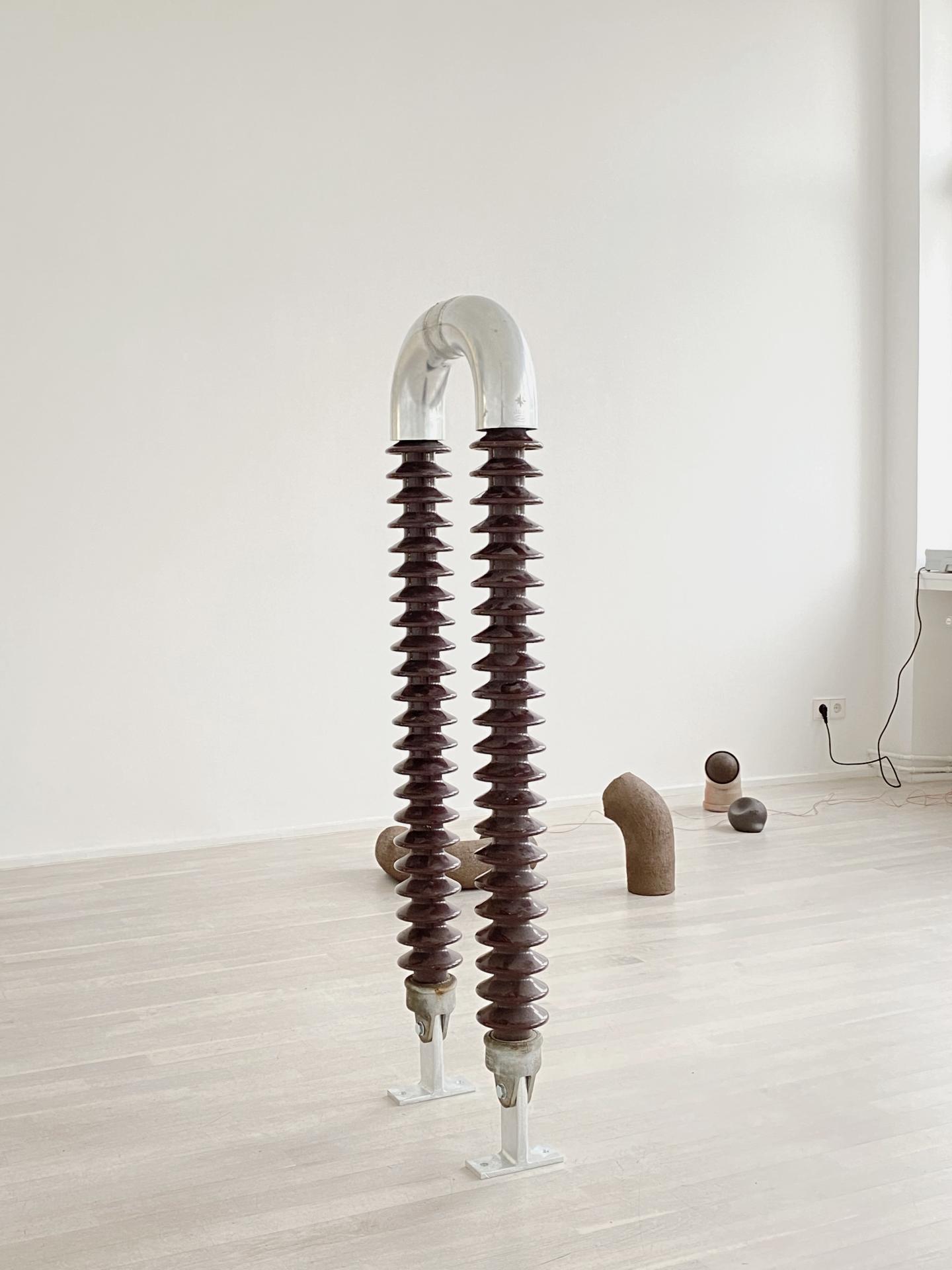Nina Canell’s Sonic Sculptures
At Daniel Marzona and Barbara Wien, Berlin, the artist highlights the communicative potential of everyday objects
At Daniel Marzona and Barbara Wien, Berlin, the artist highlights the communicative potential of everyday objects

‘I want to highlight what is typically cast in the shadow: the material agency or effectivity of nonhuman or not-quite-human things,’ writes political theorist Jane Bennet in Vibrant Matter: A Political Ecology of Things (2010). A similar urge can be witnessed in Nina Canell’s latest exhibition, ‘Dits Dahs’, where sculptures made from wire, string and shoelaces tremble, shake and shudder to create a unique soundscape. Here, the vital materiality that Bennet espouses is reflected in the artist’s sculptural process, which brings attention to the, at times, intangible relations between the objects she exhibits.

A collaboration between Berlin-based galleries Daniel Marzona and Barbara Wien, the exhibition is divided between two venues on either side of the city. At Daniel Marzona, the smaller of the two spaces, five of Canell’s wire sculptures – including the enigmatically titled Rub Flap and Bootleggerlagger (all works 2020) – span floor to ceiling, splitting the room in half. Threaded with shells, receipts, fake nails, coins and other jetsam, which are attached to vibration and frequency generators, these works can be heard long before they are visible. Reminiscent of the tap-tapping of nails on a table or the accidental kicking of a bottle cap down the street, these quotidian noises only differ from the sounds of everyday life in their ceaselessness. In the basement-level space at Barbara Wien, however, this clattering becomes more mechanical, reflecting the ring pulls and crimp sleeves that are attached to sculptures like Motor Graded Engine Imagery and Negative Hair. It’s this change of tone that opens the way for a subtle shift in thinking: rather than using electricity to animate these objects and suggest their inherent vitality, Canell renders electricity itself visible, audible and palpable through her deployment of objects.

This focus on what is unseen continues in the upstairs gallery spaces, which house a number of floor-based sculptural assemblages made from PVC pipes, rain gutters or fired clay that are scattered across three rooms. Also connected to an assortment of cables and generators, the combination of the sculptures – Rain Drains, Gutter, Gurgler and Gurglers – adds another layer of sound to the exhibition: the thunk of a ping-pong ball being passed between the assembled objects. But wander, as I did, between the galleries and no ball ever materializes; instead, this intervention slowly reveals itself as a metaphor for the transfer of energy between non-human actants that Canell’s practice insists upon – an indication of what the press release calls, ‘[the] mediation between substances and stuff’. The exhibition’s title, which refers to morse code, similarly reflects this desire for transmission.

By highlighting the communicative potential of everyday objects and the relationships between things – materials, artworks, processes – Canell’s works encourage a more attentive viewing experience, one which is particularly helpful when presented with the other mute sculptures on display. After spending time with the electrically charged wire sculptures, it seems much less outlandish to imagine that a couple of wall-mounted telecommunication cabinet doors (both titled Dits Dahs) and high voltage disconnectors (both Disconnector) are communing in some way, albeit in a frequency imperceptible to human observers.
The show opened during Berlin Gallery Weekend and, amongst a slew of spectacular exhibitions seemingly determined to show the city is still a hub for art, I couldn’t help but admire the modesty of Canell’s proposition, which seems to be that sculpture is no more and no less than how things – organic/inorganic, loud/quiet, rough/smooth, human/non-human – converse together in a room. It’s the act of ‘bearing witness’, to return again to Bennet, to the signals between vital materialities that flow through and around us.
‘Dits Dahs’ runs at Barbara Wien, Berlin until 7 November and at Daniel Marzona, Berlin until 24 October 2020.
Main Image: ‘Dits Dahs’, 2020, exhibition view, Barbara Wien, Berlin. Courtesy: Barbara Wien, Berlin























